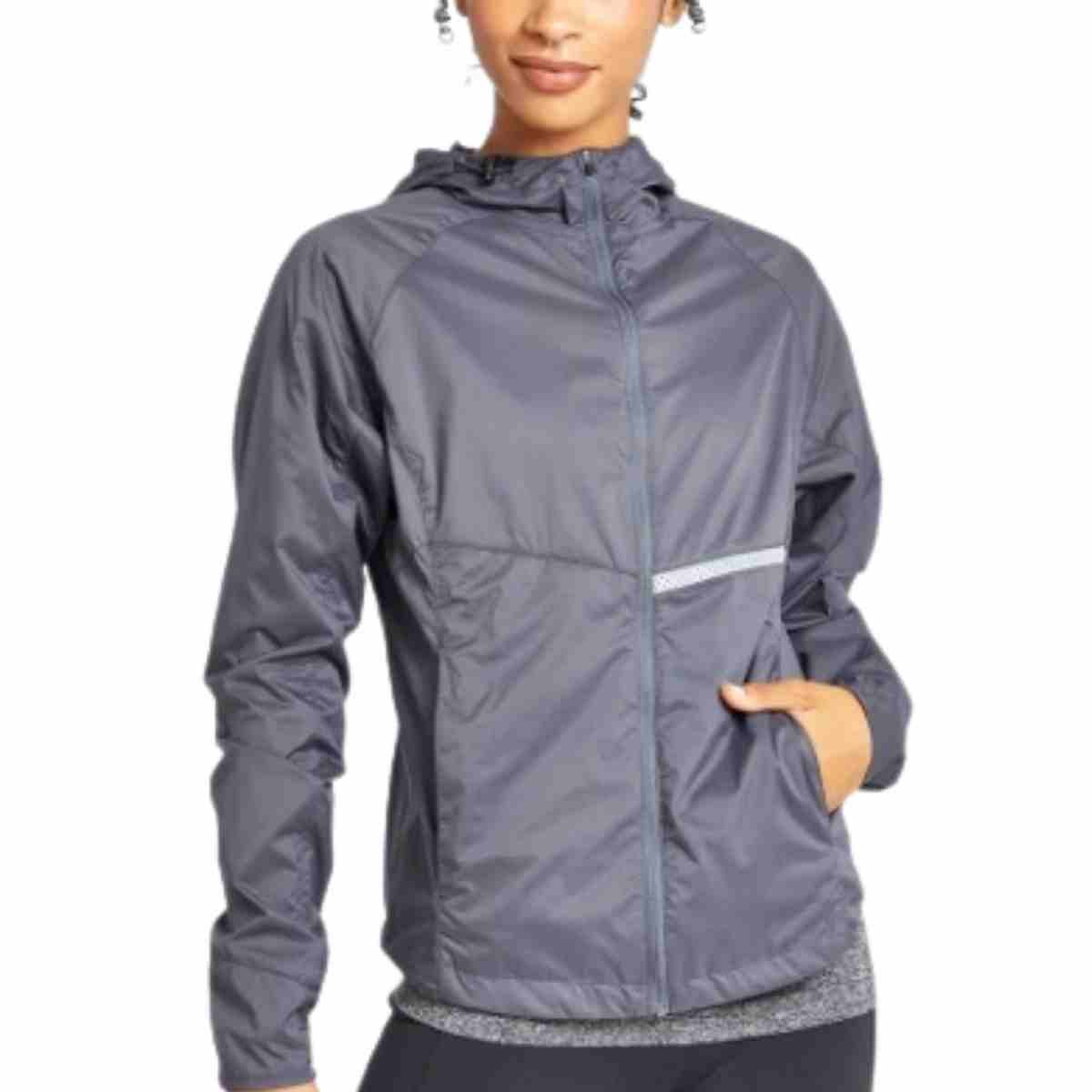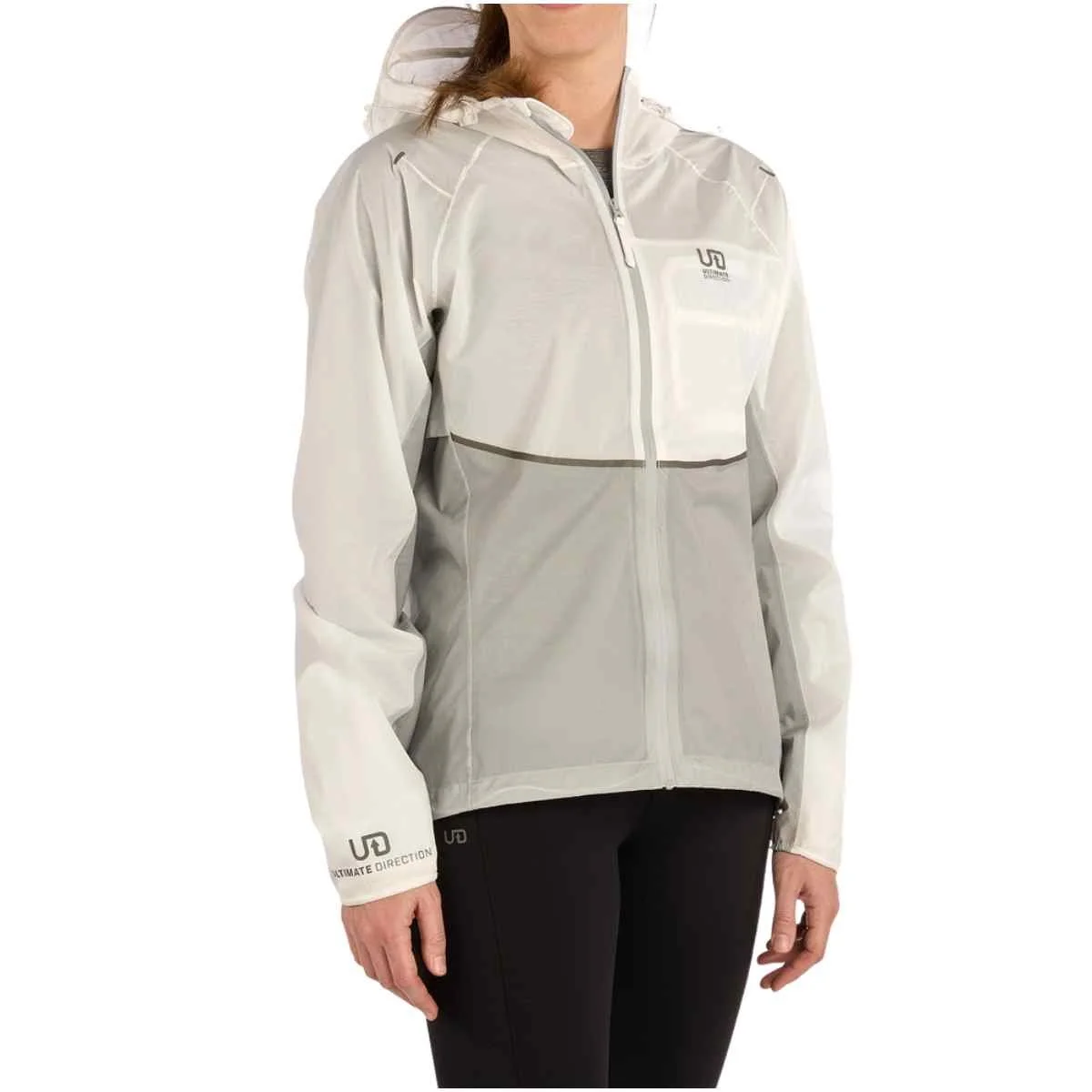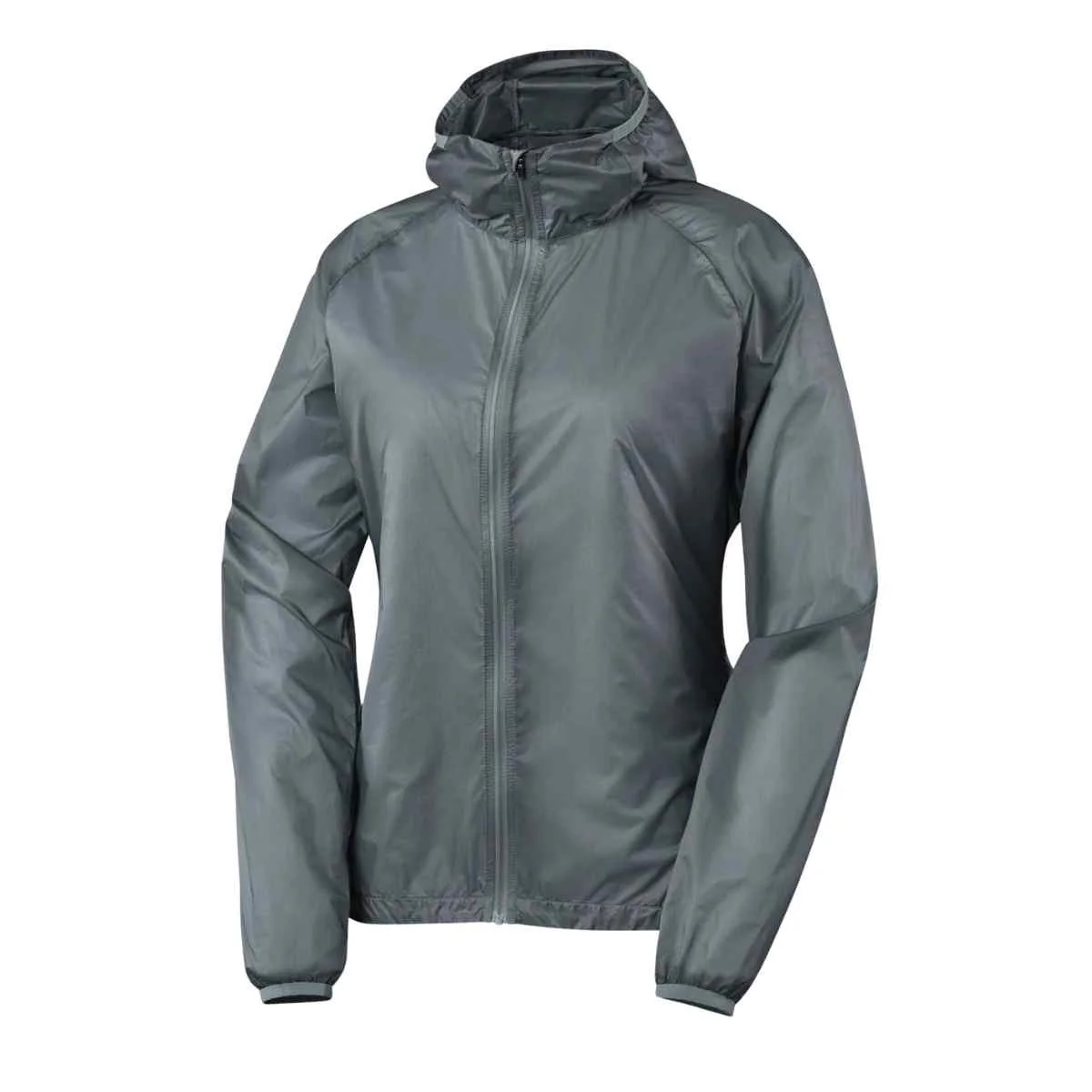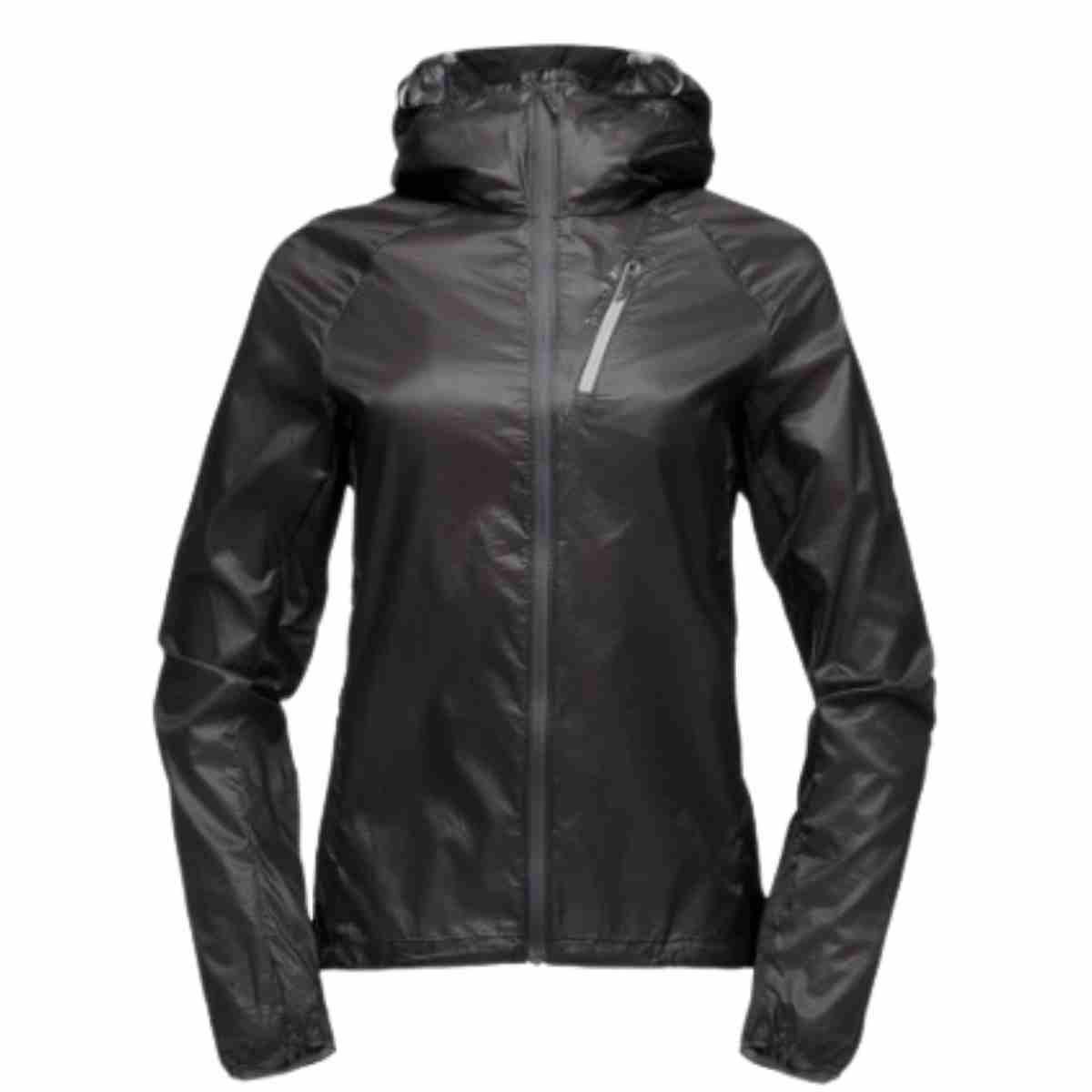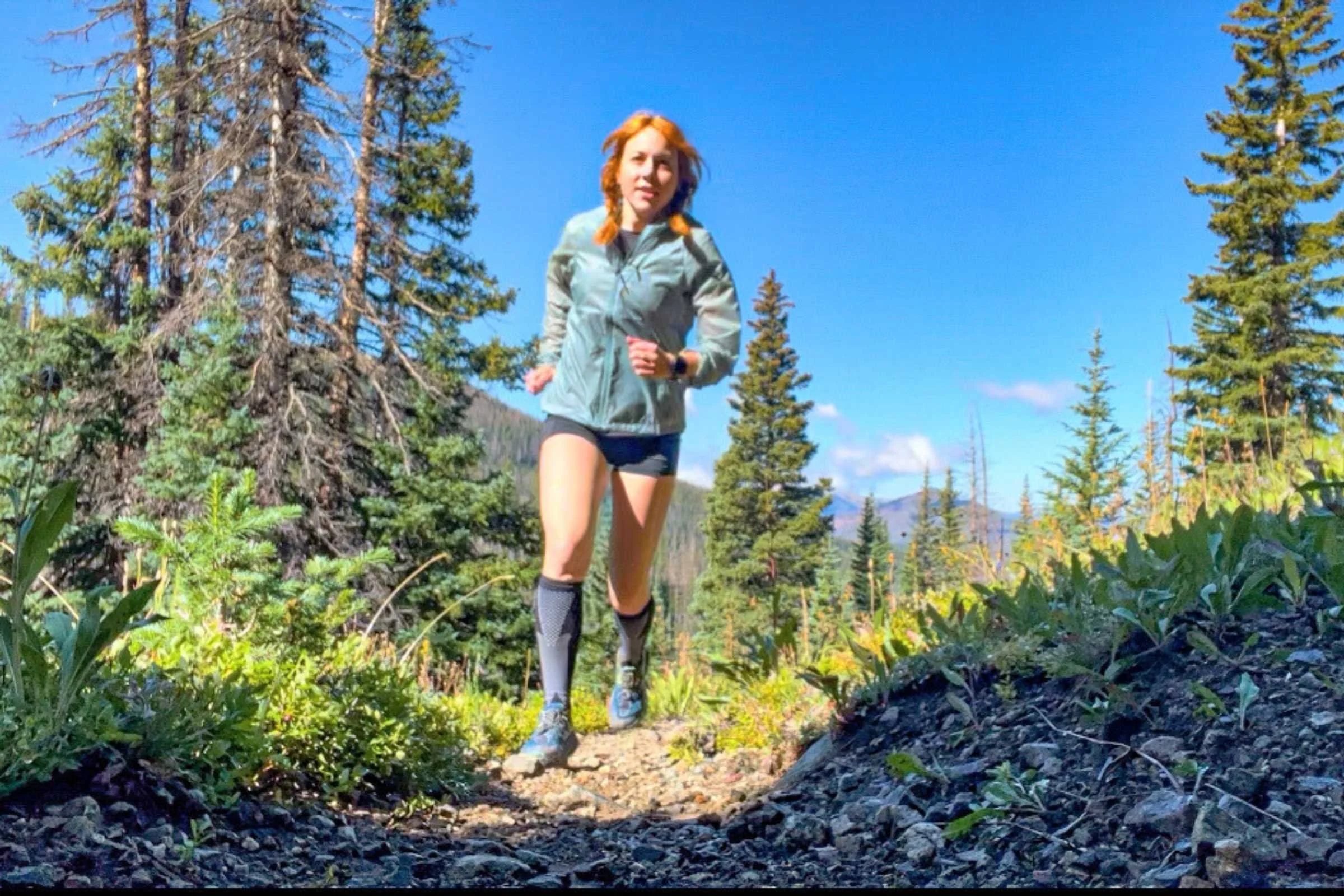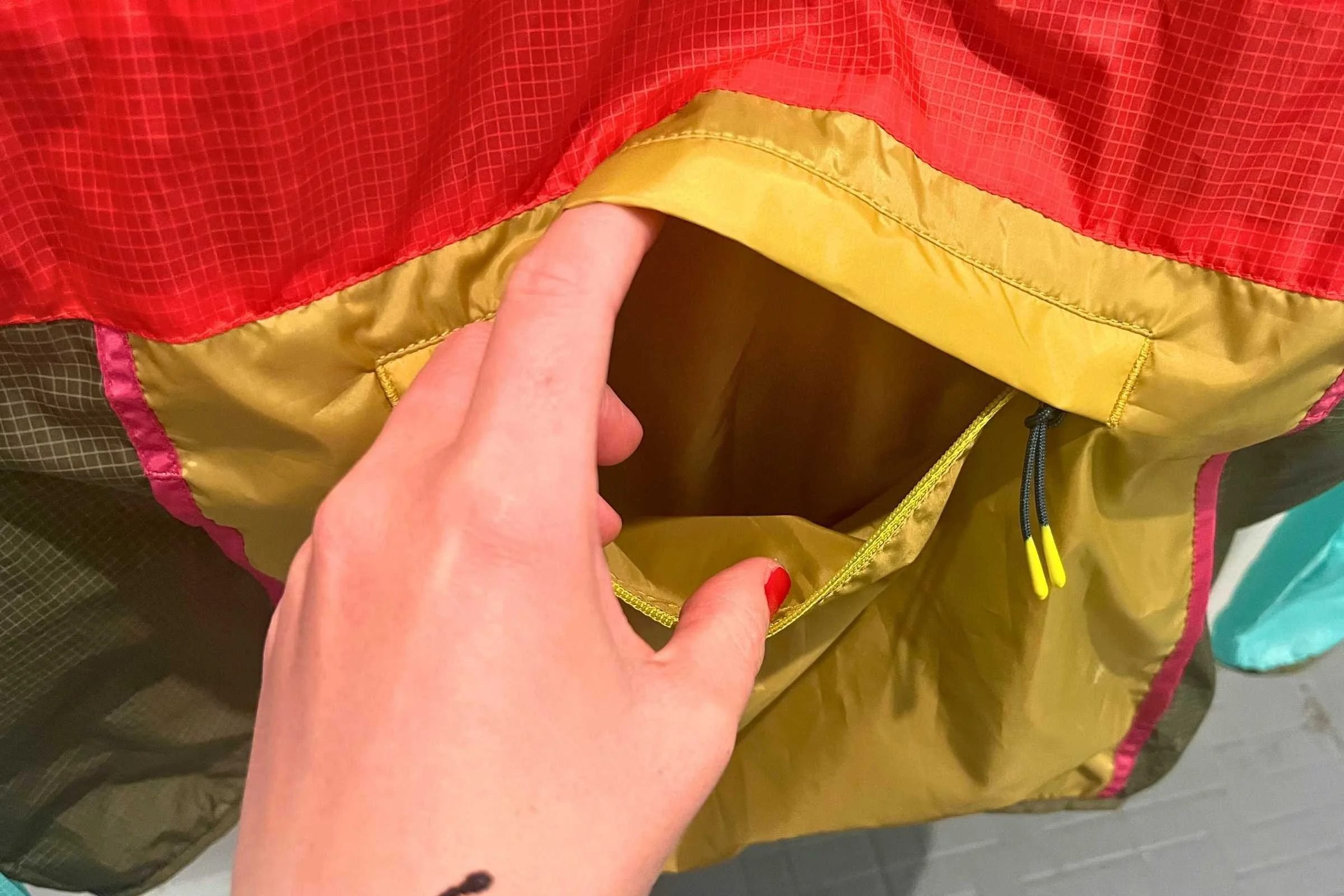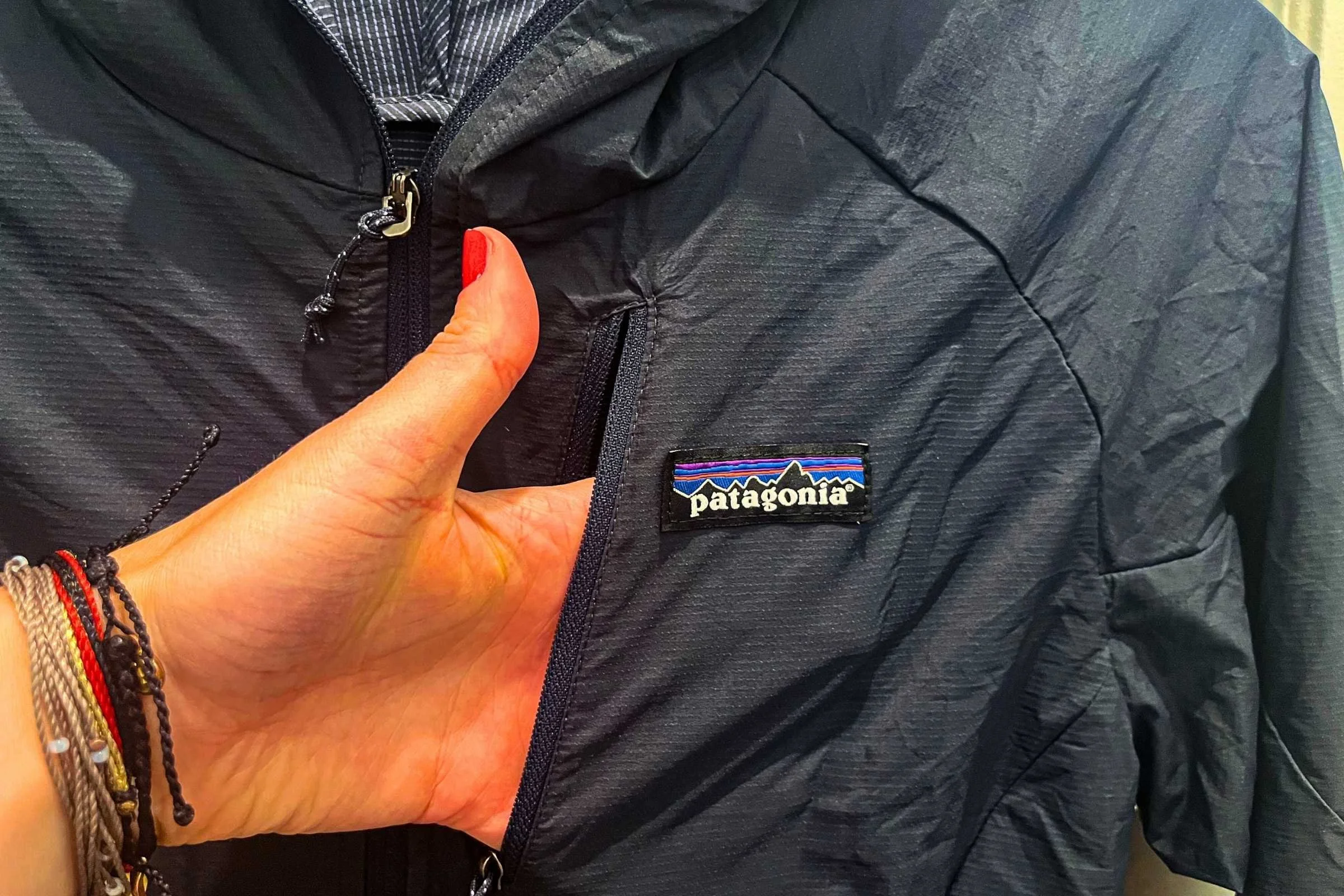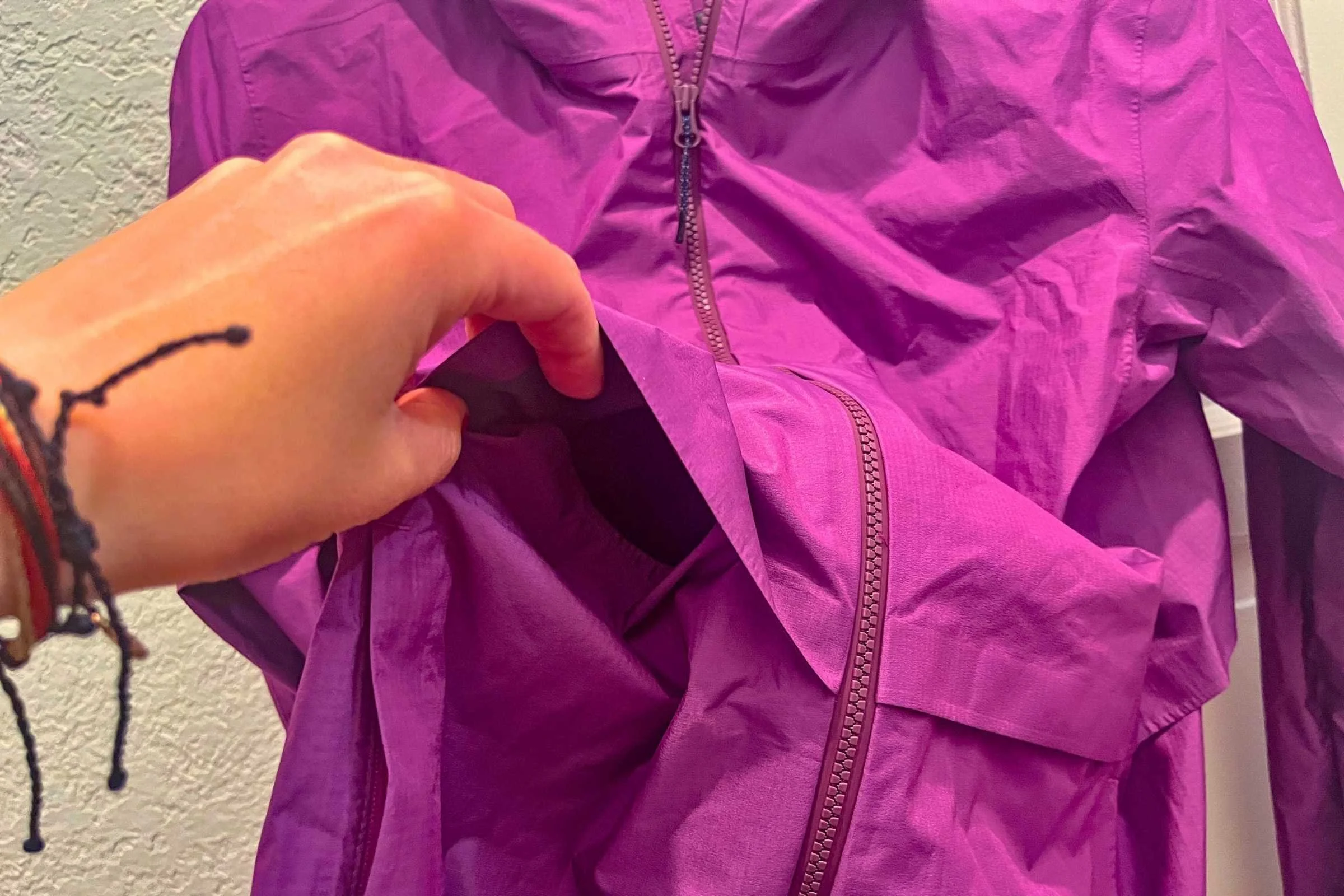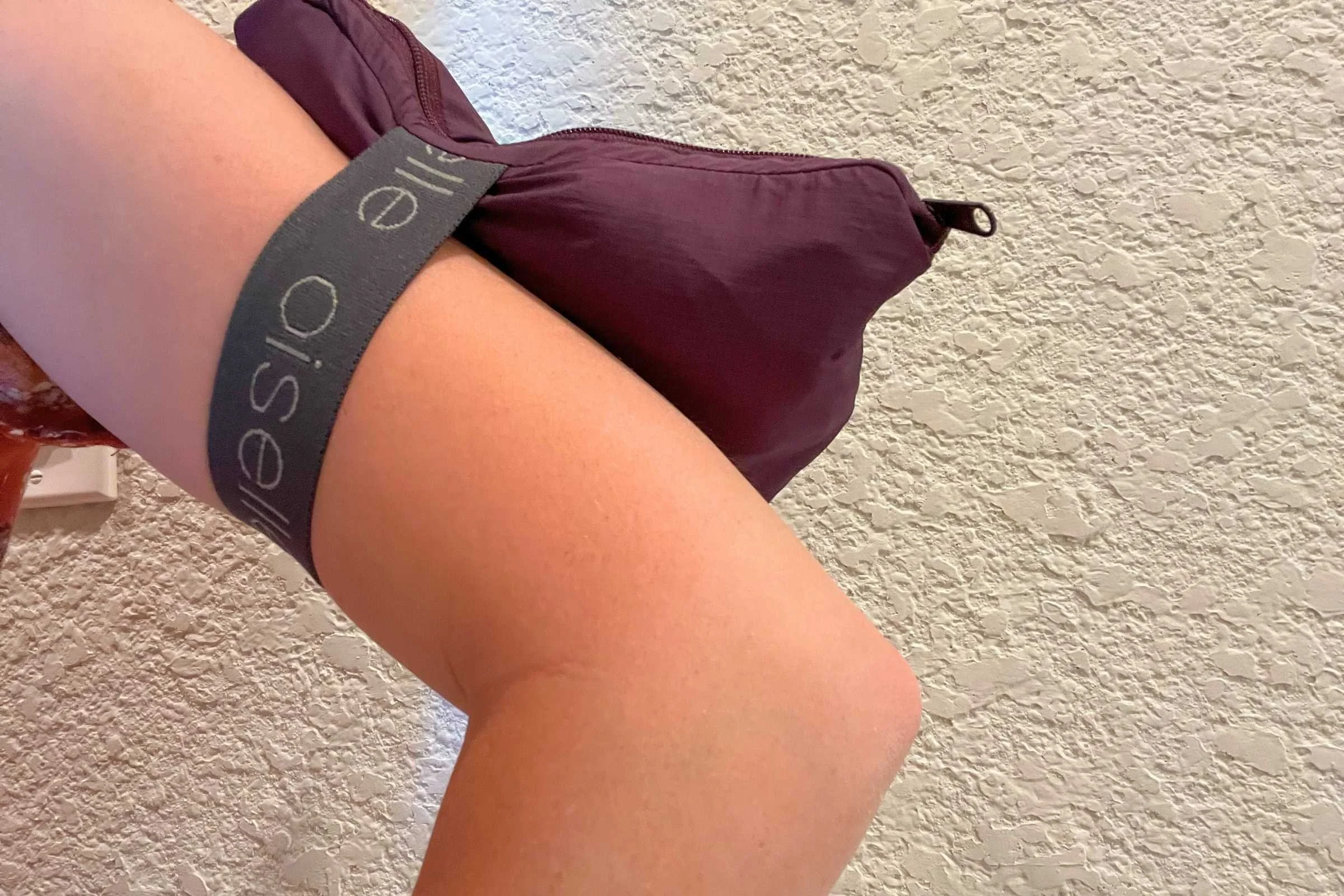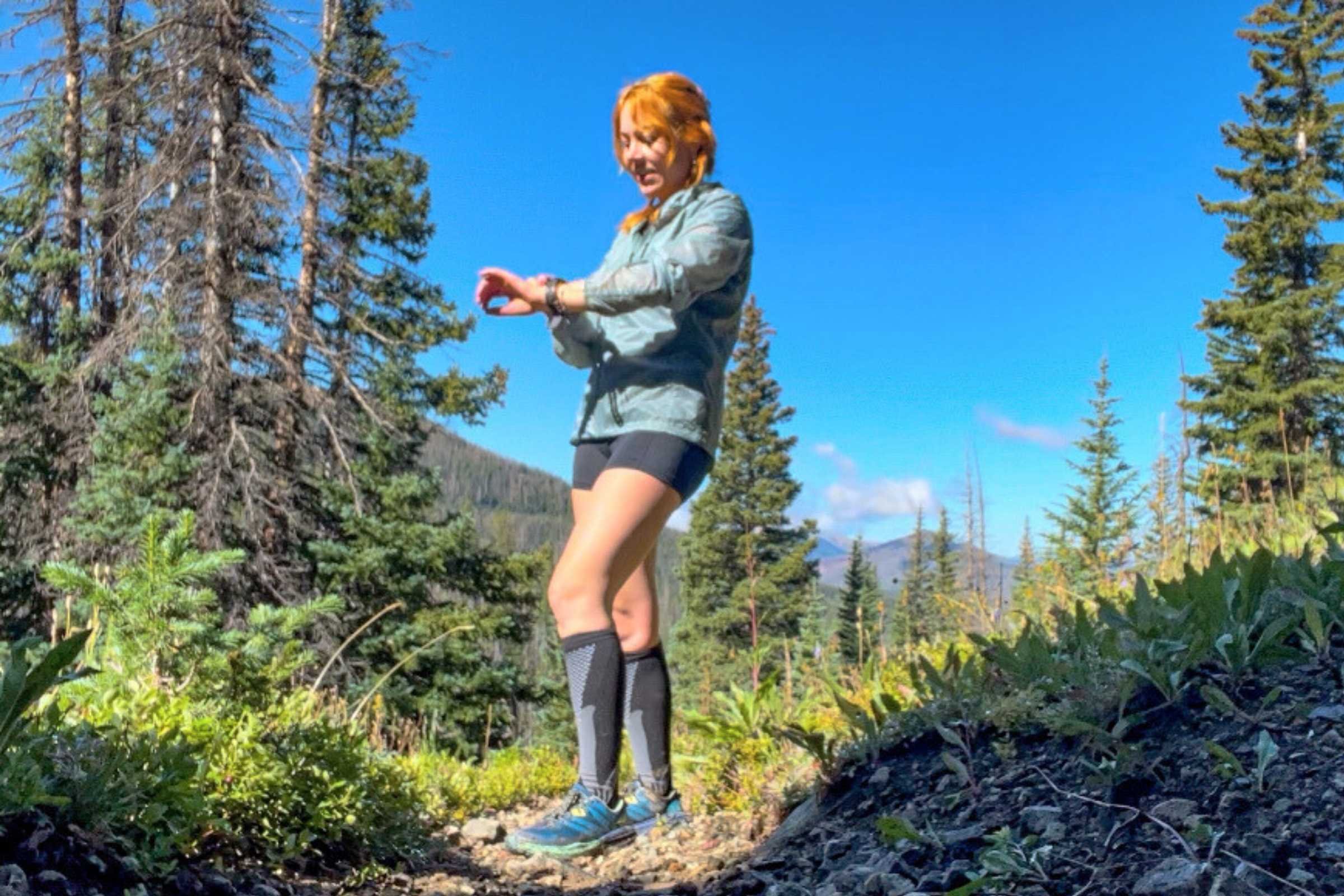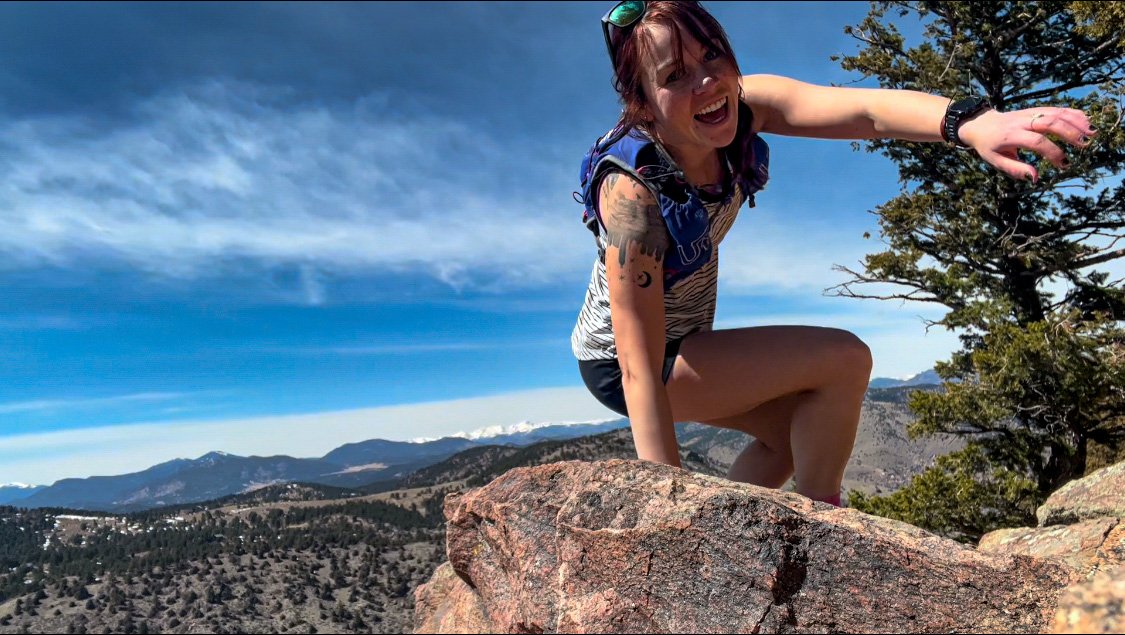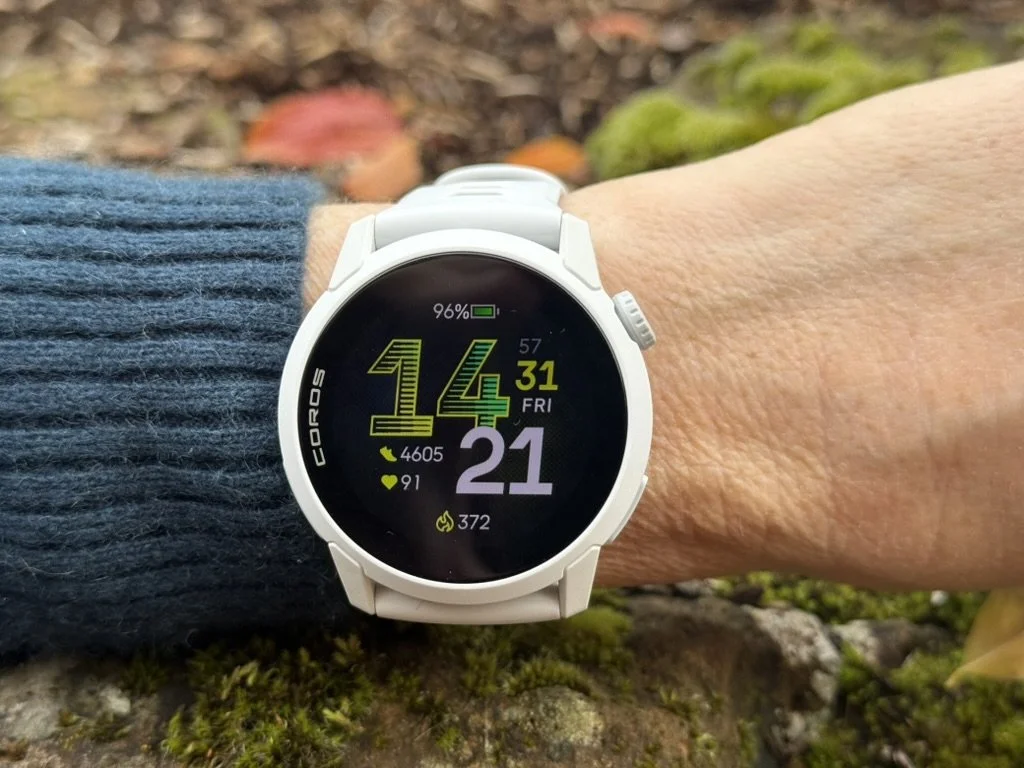Best Running Jackets for Women of 2025/26
From affordable jackets to models for wet weather, we pick the year’s top running jackets for women
Photo by Jon Rudolph
November 21st, 2025, updated with two new jackets and a year's worth of testing notes
Home > Gear Reviews > Apparel
Running jackets are essential gear for anyone logging miles in unpredictable weather. Modern fabrics combine lightweight construction, water resistance, and breathability in ways that let runners move comfortably through shifting conditions. Whether it’s blocking cool morning winds, shedding light rain, or packing away when the sun breaks through, the best running jackets balance protection and portability across a wide range of use cases.
We put these jackets through real runs in the mountains and city—testing them during early morning workouts, in gusty winds, and even under sprinklers to mimic running in the rain (and plenty of time in real rain, snow, and hail, too).
Each jacket was worn the way runners actually use them: layered over base shirts on chilly mornings, zipped and unzipped mid-stride, and packed down small once the weather cleared. This hands-on testing gave us clear insight into how each jacket performed when it mattered most.
As a long-time competitive runner (from D1 college team, road miles, to trail ultras) who coached cross country and track, I have put thousands of hours into running clothes in every weather imaginable. When it comes to running jackets, I have a good idea of what concerns pop up for runners of all ages, genders, sizes, and abilities.
Our evaluation centered on weight, packability, and breathability, along with how well the jackets blocked wind and light precipitation. We also paid attention to design features like hoods, hems, and zippered pockets, checking whether they stayed functional during a run without causing extra bulk or bounce. Comfort in motion—how the jacket moved with a natural stride—was just as important as technical specs.
Top Pick: After testing more than a dozen women’s running jackets in real-world conditions, the Brooks Canopy Jacket takes our overall winner award. It delivers reliable wind and rain protection, breathes well during faster efforts, and packs down small—providing the most dependable mix of weather resistance, comfort, and convenience across all our testing.
Looking for men's running jackets? See our Best Men’s Running Jackets guide.
We create reader-supported, objective gear reviews independently selected by our editors. This story may contain affiliate links, which help fund our website. When you click on the links to purchase gear, we may get a commission — without costing you an extra cent. Thank you for supporting our work and mission of outdoor coverage for every body! Learn more.
Comparison Table
| WOMEN'S RUNNING JACKET | TREELINE AWARD | MSRP* | SIZES | FIT | # OF POCKETS | ZIP PHONE POCKET? | WATER RESISTANCE | REFLECTIVE? | HOOD? |
|---|---|---|---|---|---|---|---|---|---|
| Brooks Canopy Jacket | Best overall Read why |
$130 | XS-XXL | Athletic | 3 | Y | Resistant | N | Y |
| Black Diamond Alpine Start Hoody | Best for trail running Read why |
$185 | XXS-XXL | Slim | 1 | Y | Repellent | N | Y |
| Vuori Outdoor Trainer Shell | Most comfortable Read why |
$118 | XXS-XXL | Slim | 3 | Y | Resistant | N | Y |
| Janji Rainrunner Pack Jacket 2.0 | Best waterproof Read why |
$208 | XS - XXL | Regular | 2 | Y | Waterproof | Y | Y |
| Cotopaxi Teca Half-Zip Windbreaker | Best affordable Read why |
$80 | XXS-4X | Standard | 2 | Y | Repellent | N | Y |
*Prices reflect MSRP and are subject to change. We note any discounts we see on our Deals page, which is updated daily.
The winners
Best overall running jacket for women: Brooks Canopy
Available sizes and fit: XS-XXL, athletic fit
Water resistance: water-repellent
Reflective elements: No
Hood: Yes
Pockets: 2
What we liked: Comfortable fit, pocket space, quality weather resistance at the price point
What we didn’t like: Not much space for layering, not as lightweight as others at the price point
The Brooks Canopy wins our Overall best women's running jacket award because it fits a sweet spot of quality weather-resistant material, portability, comfort, and style — all with a price that hovers just above the average cost of jackets we tested.
If we could only get one running jacket, we think the Brooks Canopy is the one.
No other lightweight jacket we tested has as many pockets as the Brooks Canopy. With two hand pockets on the exterior and matching pockets on the interior, there is plenty of storage space for a phone, keys, fuel, ID, or whatever small items you may need to carry. And while most lightweight jackets pack into one of the pockets, the Canopy stuffs into a backpack in the interior back.
The Brooks Canopy has found a home on many “top running jacket” lists, and for a good reason. Plus, if it’s good enough for Des Linden at the 2018 Boston Marathon, it’s good enough for the rest of us.
Compare prices of the Brooks Canopy
The Brooks Canopy is made of a breathable (moisture-wicking) woven DriLayer® Seal fabric designed for wind protection and light rain without trapping too much heat. This material also acts as a sun protectant, with a 30 UPF rating.
This updated model is made from 100% recycled materials and boasts four pockets (two zippered hand pockets on the exterior and two open pockets on the interior).
The hem drops in the back and looks a little like coattails, a design that improves coverage while maintaining a greater range of motion. The Canopy’s adjustable hood can be rolled in and clipped away, a nice feature for anyone bothered by bouncing unused hoods. The jacket packs down into a mesh “backpack” with small straps, which seems like such a clever, whimsical design. However, I struggled a little with the hood’s adjustment pulls.
The Canopy’s fit is slimmer than other jackets, and the sizing is limited from XS to XXL, making this less accessible for larger bodies or those who like to layer more underneath their jacket.
Best for Trail Running: Black Diamond Alpine Start Hoody
Available sizes and fit: XXS-XXL, women’s-specific fit
Water resistance: Water-repellent
Reflective elements: No
Hood: Yes
Pockets: 1 (chest pocket)
What we liked: Packs into a pocket, breathable, great for multiple activities
What we didn’t like: Not waterproof and update is heavier
While this is a running jacket guide, many of us enjoy multiple outdoor activities—this jacket is a great option if your interests cross over into climbing, as is the case for the author of this guide. Designed with climbers in mind, we find the Black Diamond Alpine Start Hoodie to be a great packable option for trail runners as well.
Weighing about 6.4 oz, the Black Diamond Alpine Start Hoodie is lightweight yet hardy in windy conditions. It compacts down small enough to stuff in a hydration pack easily, and offers excellent wind and water resistance.
The material is breathable, the cuffs are elastic, the hood is helmet compatible, and the chest pocket is spacious and can fit a phone. This updated version has a drop hem for more protection that’s also harness compatible if you are a climber.
View the Black Diamond Alpine Start Hoody
The Black Diamond Alpine Start Hoody
We tested this jacket on trail and road runs in Colorado in the spring, summer, and fall. We also wore it climbing in the Colorado Front Range in the spring to test its climber-friendly features.
The Alpine Start checks many boxes for various outdoor adventure needs, but it is not fully waterproof and would not make it the best option for heavy rains or extreme cold. However, the Alpine Start packs a big punch for such a small size. It withstands alpine winds, packs down small, has a large hood compatible with climbing and bike helmets, and is breathable for intense activity.
Most comfortable women's running jacket: Vuori Outdoor Trainer Shell
Available sizes and fit: XXS-XXL, Slim fit
Water resistance: water-resistant
Reflective elements: No
Hood: Yes, adjustable
Pockets: 3
Fabric: 88% Polyester, 12% Elastane
What we liked: soft, breathable comfort; odor resistant; made from recycled plastic, 4-way stretch
What we didn’t like: long drawstrings, fewer features
Of all the jackets tested, this is the softest and quietest. While many running jackets swish and crunch, this noiseless jacket is comfortable to wear without layers.
The jacket is made from recycled plastic bottles, and the polyester and elastane (spandex) blend is moisture-wicking with 4-way stretch. The material is anti-odor, and there’s a surprise extra pocket in the chest's interior. The cuffs are elastic, and the hood and bottom hem are adjustable.
My least-favorite feature was the drawstrings to adjust the hood, which flailed around near my face while I ran. This jacket is a little heavier than the others tested, making it less convenient when you need to shed a layer. Due to being less compact, this jacket would be a better fit as a shell for mildly cold runs and in mild weather conditions (not too windy, with no heavy precipitation).
Despite being less equipped for more extreme weather conditions, this jacket makes a great option for anyone looking for everyday comfort. If you’re looking to avoid the swishy, technical, feature-heavy options but still want something nice, this jacket is a good option for you.
Compare prices of the Vuori Outdoor Trainer
Best Waterproof Running Jacket: Janji Rainrunner Pack Jacket 2.0
Available sizes and fit: XS - XXL, Regular
Water resistance: Waterproof
Reflective elements: Yes
Hood: Yes
Pockets: 2
Fabric:
What we liked: Waterproof with taped seams and has good ventilation, 5-year warranty
What we didn’t like: A little on the bulky side
I’m always nervous when gear I already like gets an upgrade (I’ve been jaded by poor road running shoe updates too many times I suppose), but the Janji Rainrunner Pack Jacket 2.0 gets an A+ from me. The updates – which include lightweight ripstop and 360-degree ventilation – make the jacket even more breathable, comfortable, and effective in wet conditions.
This waterproof, windproof jacket with taped seams keeps you dry while the nylon material and core vents maintain breathability. The Rainrunner is unique in the jackets we tested in that it features YKK AquaGuard® water-repellent zippers, which help seal out water. The jacket packs down into one of the pockets with an elastic armband for portability.
Compare prices of the Janji Rainrunner Pack Jacket 2.0
The Rainrunner 2.0 has a panel venting all around the core to release heat for more intense activity. The scuba-style hood allows for visibility, and the neck zips high with a zipper garage to prevent irritation at the chin. It also features a dropped hem in the back to help guard against splatter while running.
The Rainrunner 2.0 is bulkier than the others we tested, which is understandable given its waterproof and venting functions. While it packs down with an armband like the Oiselle Reflective Vim jacket, it sticks out more and is awkward to wear around the arm. It weighs 7.2 oz, which is heavy compared to the other running jackets we tested. However, considering its rain protection, it does not feel too cumbersome, and it can pack down when needed.
For high-output activities like running, we think the new Janji Rainrunner 2.0 is the best jacket for the job.
Best affordable women's running jacket: Cotopaxi Teca half-zip Windbreaker
Available sizes and fit: XXS-4X, Standard fit
Water resistance: Water-repellent
Reflective elements: No
Hood: Yes
Pockets: 2
What we liked: Lightweight, large front pocket, stylish, more affordable, B Corp/socially responsible
What we didn’t like: No adjustable hood; not made for extreme conditions
At $80, the Cotopaxi Teca half-zip is one of the least expensive jackets we tested. For that price, you still get a lightweight windbreaker with ample pocket space, breathable polyester fabric, and that trendy Cotopaxi design. Plus, as a B Corp with a mission to inspire social and environmental change and help alleviate poverty with its business practices and volunteer initiatives, you can feel good about purchasing from Cotopaxi.
The front (“kangaroo”) pocket is spacious and has a zippered pocket overtop.
The repurposed polyester taffeta material helps wick sweat and prevent overheating, and the DWR finish helps with basic weather resistance. The elastic cuffs, hem, and hood are nice for easy removal.
While the hood has some elasticity, it’s not quite enough to stay put on windy days. The pricier jackets have more adjustable features on the hood to prevent this issue. And though this jacket works well as a basic windbreaker and light precipitation, it is not meant for heavy rainfall or frigid conditions.
You can't beat this price if you want quality material, sustainable practices, and basic windbreaker functionality. While some of the other jackets tested are even less expensive — like the Baleaf Convertible Windbreaker — you’re paying a little more for a lightweight material that feels more comfortable during heavy activity.
Compare prices of the Cotopaxi Teca Half-Zip Windbreaker
Best Reflective running jacket: Oiselle Reflective Vim
Available sizes and fit: XS-XXL, Standard fit
Water resistance: Water-repellent
Reflective elements: Yes
Hood: Yes, storable and adjustable
Pockets: 3
What we liked: Inclusive sizing, lightweight, nice pockets, and reflective detail
What we didn’t like: Zippered pockets can be tricky on the run
The Oiselle Reflective Vim wins our award as the Best Reflective Jacket because of its excellent reflective material. Of the jackets tested, Oiselle’s Reflective Vim jacket offers the best nighttime visibility while maintaining functionality and comfort. We write about the Oiselle Vim in our Best Reflective Running Gear for Running in the Dark guide, where you can find more suggestions for gear with reflective elements.
The reflective mesh runs along the chest, back, and part of the sleeves for visibility at different angles. The Vim makes me wonder why all jackets don’t offer this level of reflectivity. Runners might unexpectedly find themselves outside in the dark, so wearing reflective detailing is a critical safety practice.
As noted in the Best Running Shirts for Women article, Oiselle does a great job with inclusive sizing. Of the jackets we tested, the Vim is the only one that includes 3XL and is roomy enough for layering underneath.
The Vim easily stuffs into one of the pockets, which can be strapped around your arm. The elasticated cuffs are excellent for easy removal, the hood is adjustable, and there is ample pocket space for a phone, food, or whatever you need on a run.
View the Oiselle Reflective Vim
The polyamide material is moisture-wicking but is less breathable than polyester. Therefore, you may be more likely to heat up in this jacket than those made of polyester. I do not recommend the Vim for heavy rains, as you will soak underneath.
And while the hem and hood are adjustable, mine arrived with a broken adjuster at the hood. Oiselle accepts returns within 30 days and will replace the product if it is broken, so the broken hood adjuster isn’t a deal breaker. A small amount of work goes into returning, though; you will need to send a photo of the malfunction so they can email you a free return label and ship a replacement product.
If you’re looking for a lightweight, reflective running jacket, the Vim can’t be beat.
Other women's running jackets we tested
Ultimate Direction Ultra Jacket
MSRP: $200
Available sizes: XS-XL
Water resistance: Waterproof
Reflective elements: Yes
Hood: Yes
Pockets: 1 (chest pocket)
Fabric: Nylon, Polyester
What we liked: Waterproof, well-fitting hood, attached Flip Mitts, pit vents
What we didn’t like: Not quite as much ventilation as others
We almost named the Ultimate Direction Ultra Jacket the Best Waterproof Running Jacket—it’s breathable, has a well-fitting and adjustable hood and attached Flip Mitts for your hands, and is effectively waterproof. It offers the same waterproofness as the Janji Rainrunner Pack Jacket and costs almost the same. It was a tough call, but ultimately we appreciated the 360-degree core ventilation of the Janji Rainrunner over the pit ventilation of the Ultimate Direction Jacket.
However, the Ultimate Direction Ultra Jacket weighs nearly 1.5 ounces less than the Janji Rainrunner, and some folks may prefer pit vents over core venting. If that sounds like you, you may prefer the UD Ultra. Plus, this jacket “exceeds the breathability and waterproof standards required by the Ultra Tour Du Mont Blanc” if that seals the deal for you.
The UD Ultra offers Flip Mitts, essentially windbreaker mittens, which is helpful for those of us whose hands get cold easily. However, if you’re wearing the Flip Mitts you can’t easily access your running watch.
Both the UD Ultra Jacket and the Janji Rainrunner pack into a pocket, but the Rainrunner zippers shut to prevent the jacket from blooming back open, and it has an arm band if you have nowhere to stow the jacket. The UD Ultra Jacket also only has the interior pocket, whereas the Rainrunner has two zippered hand pockets.
We tested the UD Ultra on trail and road runs in Colorado. And when we lacked the rain, we performed a shower test to directly compare the UD Ultra Jacket to the Janji Rainrunner Pack Jacket. We also wore them both on warm, sunny days to compare breathability. While their waterproofness is pretty equal, we found the Rainrunner just a smidge more breathable due to the core ventilation rather than pit ventilation.
This jacket is the winner of Best Waterproof in our Best Men’s Windbreakers guide. Again, it’s basically a toss-up; both jackets are great, and it ultimately comes down to which features and areas of ventilation you prefer.
Ultimate Direction Ultra Jacket
Available sizes and fit: XS-XL, Athletic
Water resistance: Resistant
Reflective elements: Yes
Hood: No
Pockets: 1
Weighing a mere 1.8 oz, this is the lightest jacket we tested. It’s, like, so light. You hardly notice it, other than its ability to cut wind and keep you warmer. It breathes like you’d expect any other windbreaker running jacket, which is to say it’s not breathable like your base layers, but that’s because it’s doing its job. The breathability is improved, however, by the mesh material under the arms–a big bonus in a running windbreaker.
The downside to this jacket is its lack of pockets, though it’s so light you probably wouldn’t want to put anything in a pocket as it would weigh the jacket down too much. The On Zero Jacket is most comparable to the Adidas Terrex, which also has no pockets, weighs slightly more, but offers a hood. So if a hood is a priority for you–and you are running with a belt, pack, or have pockets elsewhere–the Terrex is a good option.
Despite its minimalist nature, this jacket is constructed of 100% recycled polyamide that is wind-resistant and breathable. I found it perfect for windy days in milder temperatures. For the absolute lightest jacket that is still of high quality, the On Zero can serve you well.
View the On Zero Jacket
Available sizes and fit: XS-XL, Regular
Water resistance: Resistant
Reflective elements: Yes
Hood: Y, adjustable
Pockets: 1
The Nathan Stealth Jacket 2.0 is comfortable, effective, and remarkably quiet. The swooshing noises you expect from a windbreaker or running jacket? Not happening. And while some folks may not mind the sound effects running jackets and windbreakers often make, those with sensory
Nathan Stealth Jacket 2.0
The jacket is made from UltraAire™ lightweight, noise-free, two-way stretch fabric, which prevents it from sounding crinkly or swooshy when you move. It’s also water- and wind-resistant, ventilated in the back, and has an attached hood with a ponytail opening and drawstring to keep the hood in place. Weighing about 3.8 oz, this nylon jacket is lightweight and breathable.
In testing, I immediately noticed the comfort of the material and how quiet it was as I moved. The jacket is soft – similar in feel to the Brooks Canopy but with a tighter weave – and doesn’t make the typical swishing noises we associate with running jackets and windbreakers, and it still blocks the wind. The jacket is lightweight, with a chest pocket to store small items like a key or fuel. The chest pocket is large, so your key may bounce around.
If I could change one thing about the Stealth 2.0, it would be to either add hand pockets or make the chest pocket less voluminous so objects wouldn’t bounce around as much (though this is a picky, personal complaint that may not bother other users). Pocket options and sizes are where the Brooks Canopy shines in comparison.
Despite my pocket complaint, the Stealth 2.0 is comfortable, quiet, and something I reached for when I felt overstimulated. Additionally, if you frequently run in the dark and want a jacket with more reflective materials, you can also opt for the HyperNight Stealth Jacket for $20 more.
Available sizes and fit: S-XL, Slim fit
Water resistance: Water-resistant (DWR finish)
Reflective elements: No
Hood: Yes
Pockets: 0
The absolute lightest weight running jacket we tested, the Katabatic Crest Windshell sacrifices little. Made of Pertex Quantum Air fabric, it’s breathable but yet still wind resistant. The fabric isn’t cold or clammy when damp. The drop-tail hem provides extra coverage in the back, which our tester really appreciated. The bottom hem can be cinched to keep it in place. A DWR finish sheds light rain and snow. Elasticized hood and cuffs are comfortable and not too tight.
The one thing it’s missing — a pocket. Our tester never uses the pockets on her windshell, so she didn’t miss it.
But if you’re looking for a purely minimalist jacket, the Katabatic Crest can’t be beat.
View the Katabatic Crest Windshell
Available sizes and fit: XS-XXL, Slim fit
Water resistance: Water-resistant
Reflective elements: Yes
Hood: Yes, adjustable
Pockets: 1
Lighter than its sibling jacket, the Houdini Air, this ultralight jacket is nice for wind resistance and portability. It packs down almost as small as the Black Diamond Distance Shell and feels similar while wearing. This weather-resistant jacket packs away without taking up much space or weight, making it an excellent option for ultrarunners and thru-hikers.
We've written about the Patagonia Houdini extensively in Our List of Favorite PCT Gear, our PCT Gear List Guide, our PCT Southbound Gear List, and more. Still, unless you need a lightweight jacket like this, we think you'll be better served by the Black Diamond Distance Shell.
Compare prices of the Patagonia Houdini
Available sizes and fit: XXS-XXL, Trim
Water resistance: Waterproof
Reflective elements: Yes
Hood: Yes
Pockets: 0
The Arc’teryx Norvan Shell is extremely high quality and will leave you bone dry, but doesn’t have pockets or as nice of ventilation as the Janji Rainrunner 2.0, which a runner may prefer.
The Norvan Shell is constructed of GORE-TEX and a GORE-TEX 3L C-KNIT™ membrane. It’s waterproof and windproof, and while Arc’teryx describes it as “breathable,” it isn’t vented like the Janji Rainrunner Pack Jacket and is not breathable for a running jacket. The Norvan also has a low-profile hood, which might be nice for slower movements like hiking, but for running, it doesn’t stay on very well. The cuffs are elastic to help keep out water, and the bottom hem is elasticized as well. It’s also made from materials that meet bluesign criteria.
I tested this jacket primarily in the winter, as the lack of ventilation makes this ideal for really cold temperatures. I tested while snowshoeing during a snowstorm near Breckenridge, Colorado, as well as running on cold, rainy, and snowy days in Denver. I appreciated how toasty and dry the jacket would keep me, as well as the high quality of the material – you could really put this jacket through the ringer, and it would hold up.
But ultimately, I never found myself reaching for it when it came to running in most conditions, as I’m someone who would rather get wet from the rain than overheat.
This jacket is ideal for someone who may use it for hiking or winter sports in wet and cold conditions. While you could wear the Norvan with a hydration belt or pack, if you’re looking for a jacket more equipped for a runner’s needs – e.g., has pockets and ventilation – you may be better off with the Janji Rainrunner Pack Jacket 2.0.
View the Arc’Teryx Norvan Shell Jacket
Available sizes and fit: XS-XXL, Regular fit
Water resistance: Water-resistant
Reflective elements: Yes
Hood: No
Pockets: 3
At $53, this is the least expensive of all the jackets we tested. It gets the job done as a windbreaker, but it is loud and bulky, limiting the range of motion and making it less comfortable than other options. At this price, I’d personally spend $17 more dollars for the Cotopaxi Teca half-zip, but if that doesn’t fit in your budget, this will still get the job done.
View the Baleaf Convertible Windbreaker
Available sizes: XS - 3X
Fit: Standard
Fabric: Chest, shoulders, and upper back: ripstop nylon (bluesign®-approved); lower back, forearms, underarms, and lower torso: 91% polyester/9% spandex grid-back fleece (bluesign®-approved)
Zippered pockets: Two (hand pockets)
What we liked: Warm insulation, moisture-wicking
What we didn’t like: Less breathable and not suited for high-output activity
The REI Swiftland Insulated Jacket is a cozy jacket with fleece insulation, making it a good option for cold runs. There’s room to layer underneath as well. Because it’s an insulated jacket, it would not be well-suited for warm to chilly days when you only need a light windbreaker.
Additionally, the Swiftland does not have a hood.
Still, if you’re running in winter and looking for an insulated running jacket to go with your winter running tights, the Swiftland is worth a lookl
View the REI Swiftland Insulated Running Jacket
Available sizes and fit: XS-XL, Slim fit
Water resistance: Water-repellent
Reflective elements: No
Hood: Yes
Pockets: 1
Fabric: 15D Lightweight Nylon Ripstop Woven with DWR Finish (100% Nylon, 30gsm)
What we liked: Ultralight, packs down small, breathable, great for multiple activities
What we didn’t like: not waterproof or great for cold weather
At 2.54 oz, the Black Diamond Distance shell is ultralight, compacts down small enough to stuff in a hydration pack easily, and offers excellent wind and water resistance for its small size. The material is breathable, the cuffs are elastic, the hood is designed to fit over helmets, and the small chest pocket is enough to fit fuel and most phones (I was able to fit my 5.18” x 2.53” iPhone 13 mini with no problem).
In addition to its small size, this jacket boasts Green Theme International’s Empel Breathable Water Protection Technology, free of per- and poly-fluorinated chemicals. Many DWR (durable water repellent) coatings used to be made with these chemicals, which have been found harmful to the environment. Companies have phased out using the harmful chemicals, as most states have banned them. In this case, Black Diamond uses an environmentally-friendlier option in partnering with GTI.
This jacket checks many boxes for various outdoor adventure needs, but it is not fully waterproof and would not make it the best option for heavy rains or extreme cold. If you’re looking for a jacket that can withstand heavy rains or need something to take you into the cold winter months, you’re better off with something like the Janji Rainrunner for $58 more if that fits your budget (waterproof is always more expensive). See our Lightweight Rain Jackets guide for our recommendations if you need a dedicated rain jacket.
Despite its shortcomings in the rain and cold department, this jacket packs a big punch for such a small size. It withstands alpine winds, packs down small, has a large hood compatible with climbing and bike helmets, and is more breathable (cooling) for intense activity.
View the Black Diamond Distance Wind Shell
Why do you need a running jacket?
A running jacket is an essential piece of athletic gear that offers several benefits to runners. Here are some reasons why you need a running jacket:
Weather protection
Running jackets are designed to protect you from wind, varying levels of precipitation, and in some cases, cold temperatures. Most running jackets are wind and water-resistant, but some are fully waterproof and/or insulated to protect from even more extreme elements.
Temperature regulation
Running jackets tend to be more breathable than regular jackets–with ventilation systems and materials that encourage more airflow–allowing you to have a little more control over your temperature regulation during your run. They also tend to pack down either into a pack you wear while running or a small, lightweight pack you can easily hold when you’re hot. Additionally, if you run in frigid temperatures, some running jackets are insulated for more warmth.
Moisture management
Moisture-wicking materials, like nylon and polyester, make running jackets breathable while helping keep you as dry as possible. Non-moisture-wicking materials, like cotton, hold water, which feels heavy and uncomfortable, and can lead to chafing and even hypothermia.
Wind resistance
The primary purpose of most running jackets is to protect from the elements, like wind. Similar to windbreakers, running jackets are great for windy runs. Learn more in our comparison of windbreakers to other jackets.
Visibility and Safety
Running jackets constructed of hi-vis colors, like bright yellow, green, or orange, and/or reflective elements help improve your safety while running. We particularly like the Oiselle Reflective Vim Jacket and the Brooks Run Visible Jacket, as they are breathable, comfortable, and effectively reflective.
Versatility
A useful aspect of adding a running jacket to your wardrobe is its versatility. Because of their breathability, they tend to work well in a wide spectrum of temperatures, and can be paired with base layers to keep you warmer. They’re nice to have on windy days, during light precipitation, and when the weather looks like it could turn at some point during the run.
Storage and pockets
A close-up on the Cotopaxi Teca’s lightweight grid fabric visible in the arm, as well as the generous zip kangaroo pocket.
Most running jackets come with at least a chest pocket, if not also hand pockets and even internal pockets, for storing small items like a key, ID, and fuel. Typically, running jackets stuff into one of the pockets for easy and efficient storage.
Durability compared to other layers
Since running jackets are intended for bad weather, the material tends to be more durable to withstand wind and rain.
What to look for in a running jacket
The Houdini Air is an ultralight, wind resistant wind shirt that maximizes airflow for intense activities yet can still withstand high wind.
To find the best women's running jackets, we set the following criteria to judge the top-rated models out there. These criteria are also a good benchmark for you to choose your own running jacket if you're considering one not on our list.
Fabric
The fabrics used in running jackets are similar to those commonly used in running shirts and tanks — polyester, nylon, spandex, elastane, or a blend. Additionally, some jackets — like the REI Swiftland — will include fleece, especially for jackets intended for cooler weather.
These fabrics are durable, lightweight, and breathable. Polyester and nylon also lend themselves to waterproof or water-resistant gear.
Fabric Weight
There is a significant range in fabric weight when it comes to running jackets, mainly because there is a significant range in the weather for which these jackets are intended. For example, the On Running Zero jacket weighs a mere 1.83 ounces, making it perfect for runs during which you might warm up quickly and want to stuff the jacket in your hydration pack or running ultra-length distances and do not want to be weighed down.
On the other hand, the REI Swiftland weighs 10.2 ounces. The extra weight comes from the fleece layer added for cold weather, making this winter running jacket a better fit when the temperature drops. For more on choosing gear for running in the winter, see our article on Tips for Running in the Cold.
Water resistance
Something to pay attention to when purchasing running jackets is whether it is water-resistant, water-repellant, or waterproof. Water-resistant jackets offer the lowest level of protection from precipitation. Most jackets tested fall into this category. Not to say they are bad for wet weather — most withstand light rain quite well — but they simply aren’t made to endure heavy precipitation and are typically intended as a basic level of protection.
Water-repellent materials offer a little more protection by repelling the water but are not fully waterproof.
Waterproof jackets offer the greatest protection from the rain. The material keeps the rain out, and they use taped seams as an added sealant against the rain. They will also be, understandably, the most expensive. For example, the Janji Rainrunner costs $198, and others we didn’t test can cost up to $300. While none of the jackets in this guide are Gore-Tex, in general, name brand waterproofing tends to cost more than an in-house fabric.
The Brooks Canopy running jacket has a slim fit.
The Cotopaxi Teca windshirt has a regular, more boxy fit.
Fit
The typical jacket fits include slim, regular, standard, or athletic. Slim-fit jackets are smaller and tighter. I recommend staying away from these simply because they tend to be less functional (it’s more challenging to layer underneath) unless you are looking for a lightweight jacket for warmer climates.
Regular or standard fit jackets offer more room for layering and are more likely to have more functional pockets, and Athletic fit jackets are tailored for athletic body types. Women’s running jackets tend to mean a roomy but styled shape.
You’ll want to decide how much layering you’ll want to be able to fit under your jacket. Slim-fit jackets, like the Brooks Canopy, will give you room for a base layer, whereas jackets like the Cotopaxi Teca half-zip are roomy enough for more layers.
Range of motion
While smaller, the light and ultralight jackets offer plenty of range of motion, whereas bulkier jackets — like the Baleaf Convertible Windbreaker — feel more limiting and in the way. All the jackets we tested, no matter the weight or capabilities, offered good range of motion. None hindered motion enough to note.
Another aspect to consider, however, is how stretchable the wrists are. Some jackets have tighter wrists, making it more difficult to pull over watches, especially mid-run when you’re ready to shed a layer. I like to look for jackets with elastic cuffs that slip easily over my clunky watch — it seems like a small detail, but when you’re investing this much in running clothes, it’s essential to buy something you’re going to be happy with.
Flatlock seams
Clothing with flatlock seams creates a smooth fit because the fabrics do not overlap. Flatlock seams are a great feature in running clothes as you’re less likely to chafe. Seams would be less of a concern if you plan on wearing a layer under your jacket.
Taped seams
Waterproof jackets boast taped seams to prevent water from sneaking through the holes that come from stitching. Because they’re a feature of waterproof jackets, they accompany a higher cost; you’ll want to decide how important that is to the activities you’ll be doing and the climate in which you live.
Underarm gussets
Underarm gussets — added to sleeves for breathability and airflow — are an excellent feature, particularly for individuals looking for light jackets meant to wind block or resist rain on warmer days and want to avoid trapping heat in their jackets. photo
The Cotopaxi Teca’s zipped kangaroo pocket has room for extra layers, snacks, a phone, keys, wallet, and more.
Patagonia Houdini’s zipped chest pocket has space for a phone.
Functional pockets
Personally, pockets should be non-negotiable. Every jacket should have pockets, and I am always shocked when I come across ones that don’t. It shouldn’t be a matter of whether it has pockets, but how many, how big, and how accessible. I have horror stories of zippered pockets getting stuck mid-marathon and locking me out of my fuel, so pockets that open quickly and can hold essential items (like fuel, a key, maybe even your phone) are necessary.
Hand Pockets
It’s common to see pockets at the front to the sides, where one would intuitively put their hands. Generally, there is enough space for a key, ID, and fuel. Jackets like the Brooks Canopy and Oiselle Reflective Vim offer hand pockets. The Cotopaxi Teca Half-zip has a large front “kangaroo” pocket that could fit a wealth of objects if needed (maybe even a pair of running socks!). However, you probably don’t want a lot bopping around in there while you’re running.
Chest Pockets
These tend to be smaller pockets, ideal for a key or an ID. Most ultralight jackets have one chest pocket, with enough room for most phones or some electrolytes.
Back Pockets
Not as many jackets offer a back pocket, but the Baleaf Convertible Windbreaker sports a large back pocket (the same pocket it stuffs into for portability).
Phone Pockets
While pockets may fit a phone, I’ve found it pretty uncomfortable to run with a phone in my jacket pocket because of how aggressively it weighs the clothing down and swings. However, after testing these jackets with a phone in the pockets, I was surprised by how little I noticed it. Even the ultralight Black Diamond Distance Wind Shell and Patagonia Houdini jackets — with a small chest pocket on each — didn’t bounce around too badly while running. I found the phone much more noticeable in more oversized pockets, like with the Cotopaxi Teca.
Insulation
Insulated jackets provide extra warmth, recommended for runs in colder environments. The extra lining is another layer of material stitched to the outer layer. For example, a cold weather jacket is often lined with merino wool on the interior for warmth (and breathability, as merino wicks moisture from the body). If you need more insulation, check out our Best Synthetic Jackets guide, specifically the review on the Patagonia Nano Air, which breathes well for high-output activities.
To show the reflectivity of the Oiselle, we took a photo with the camera flash on. This is what the backside of the jacket looks like—an entire stripe of reflective detailing.
Reflective elements
Some running jackets feature reflective fabrics to improve visibility when running in the dark. Reflective elements are recommended for anyone running in the early mornings or late evenings and nights, especially on for road running. While some jackets will advertise “reflective elements” as a feature, they are often not enough for safety, so it’s recommended that you wear additional reflective gear or a headlamp while running in the dark.
You may even want to consider reflective running shoes. The Oiselle Reflective Vim jacket has the most reflective elements of all the jackets we tested, and while the coverage is pretty good from the back, there isn’t as much reflective coverage on the front. So, it doesn’t hurt to wear more, especially if you’re running in high traffic areas in the dark. If you want to learn more about running during low light times of the day, check out our Best Reflective Running Gear for Running in the Dark guide.
venting and Breathability
Venting on the Cotopaxi Teca Windshirt involves panels with large openings of mesh.
Venting on the Janji Rainrunner jacket are much larger air holes.
Running jackets generally use polyester or nylon fabric to maintain breathability — i.e., to help airflow and prevent you from trapping in moisture or overheating. Even waterproof jackets can maintain breathability by using those fabrics and applying a waterproof coating on the outside. The jackets with less breathability have an extra insulating layer for colder weather.
Torso length
Most jackets either crop at the waistline — especially the lightweight jackets — or drop lower, particularly cold-weather jackets and those intended for heavy rain. Jackets with longer torsos tend to provide more wind and rain protection but can be more cumbersome and restrictive. They also can be more difficult to stow away in a pack. Desired torso length may come down to your priorities and typical running conditions. For more on gear for cold-weather running, see our Cold Weather Running Gear List.
Thumbholes
Thumbholes near the cuff are a simple joy to me, even if I don’t always use them as intended. I enjoy thumbholes in cold or wet conditions as a watch window when I don’t want to lift my sleeve all the way, though it’s also great for its intended use (keeping the sleeves in place).
The secure hood on the Patagonia Air stayed on even in the wind on a summit.
Hood
In my previous experiences, hoods on running jackets do not simply stay on one’s head unless you put a hat on it. However, many jackets now offer methods for keeping a hood in place. Some, like the Black Diamond Distance Wind Shell, have large hoods meant to cover helmets, but that also stay in place due to their size (though this can limit visibility). Others, like the Oiselle Reflective Vim jacket, the Patagonia Houdini and Houdini Air, and the Vuori Outdoor trainer, use drawstrings of different designs to pull the hood tight.
Portability
The Oiselle Vim comes with an arm strap to easily carry the running jacket if it becomes warm enough to shed a layer.
If you’re going to be running for long periods, and especially if you’ll have some sort of hydration pack, it can be nice to have a small, ultralight jacket that easily packs down. I easily packed two or three lightweight jackets in my small Nathan hydration pack as I tested the gear, which I appreciated during the warmer parts of my excursion and the windy, exposed peaks when I could pull it back out.
Many running jackets now have pockets that function as a stuff sack when turned inside out. The Black Diamond Distance Wind Shell, the Patagonia Houdini and Houdini Air, the Oiselle Reflective Vim jacket, the Cotopaxi Teca half-zip, the Black Diamond Alpine Start, the Janji Rainrunner, and the Baleaf Convertible Windbreaker all have this function. The Oiselle and Janji jackets have armbands to strap on while you move, while the others have hooks for carabiners.
The type of running, where you are running, how long you are running, and how you prefer your clothes to fit will all impact how you choose what running jacket to get. For example, the Patagonia Houdini here is a good choice for runners who prefer a drop-hem, or longer hem in the back for fuller coverage.
How to choose a running jacket
What kind of running will you be doing?
Are you a roadrunner, trail runner, or track athlete, or do you combine these worlds? Are you training for ultras or sprints? While you can technically wear any of these jackets for any type of running, you can narrow your search by considering what type of running you’ll be doing the most and what features will be more critical.
For example, trail runners who train in wet conditions may prefer a waterproof jacket like the Janji Rainrunner. Mountain runners may prefer a wind jacket that packs down small, like the Black Diamond Distance Shell.
Road runners and track athletes may appreciate the slim fit and dependable pockets of the Brooks Canopy jacket. And those who are new to the sport and are hesitant about investing too much money may gravitate toward the Cotopaxi Teca half-zip for its good quality and lower cost (and its attractive design, which personally is one of my favorite aspects of the brand).
In what temperatures will you be running?
Maybe you’re looking for a light layer for the first couple miles of a cool morning run, you want extra protection from the rain or wind even when it’s warm, or you are preparing for cold, windy, and raining high-altitude excursions. The temperature and climate you’ll be working out in should factor into your jacket-buying decisions.
It would be silly to spend $200 on a heavier, windproof, and waterproof running jacket if you’ll be running in mild temperatures and conditions. It would also be a waste of money to buy the ultralight Patagonia Houdini jacket if you need something to protect you from freezing, windy runs.
The Oiselle Reflective Vim has a stripe of reflective detailing down the back for those who will be running in the dark.
Will you be running in the dark?
If you’re running before the sun rises or after it sets, reflective gear is an important safety feature you may want to consider. Many jackets, such as the Oiselle Reflective Vim jacket, are equipped with reflective materials. This feature is essential for road runners, as motor vehicles are likely your greatest potential danger on dark runs. If you find other features more important — for example, you know you need a fully waterproof jacket — I recommend opting for the waterproof jacket and wearing a reflective vest or lights over.
The Houdini Air torso coverage stops around the waist for great mobility and to pack away more efficiently when not in use
How much torso coverage do you want?
In my mind, this decision will likely be covered by the other considerations you’ll be making — how cold or wet your runs will be, or if you’ll want something that packs down small, for example. Ultimately, torso length can be a comfort decision. I prefer jackets that stop around my waist for greater mobility and to pack away more efficiently when not in use. Even if I tie a jacket around my waist on runs and I’m not wearing a pack, I don’t want something long that will brush the back of my legs too much. But again, this decision is up to you!
The Houdini Air has a dropped hem in the back that makes it well suited for anyone who wants to make sure their wind shirt doesn’t ride up.
Do you want a hood?
If you often run in windy and wet conditions, you may want to consider a hood. If you desire a hood, try to find one that isn’t too bulky or heavy, as that can be annoying to have bouncing around during a run. You’ll also want to opt for adjustable ones, otherwise, they are less likely to stay in place. All the hooded jackets we tested passed the vibe check (that is, they stayed up reasonably well and were adjustable), but if you look at brands outside the ones we tested, this is something to look out for.
Do you want a zippered pocket?
The upside to zippered pockets is you can feel better putting sensitive items — keys, phones, IDs, etc. — inside them without fear they’ll fall out. If you’re racing in this jacket or going on long, secluded runs, you’ll want to be sure the zipper unzips easily and doesn’t catch on the fabric often. There isn’t much worse than bonking because you can’t access the fuel in your suddenly unzippable pocket (believe me, I’ve been there).
While testing these jackets, I didn’t run into too many issues. The Oiselle Reflective Vim jacket’s pocket zipper stuck a few times, but most of these jackets generally offer similar zipper situations.
The Janji Rainrunner has waterproof taped seams to truly be a waterproof layer. This is a feature you’ll pay extra for vs. water-resistant jackets, which don’t have taped seams.
What features do you want?
If you’re going to invest in a nice running jacket, you’ll want to consider the following:
Material
For breathability and moisture-wicking, you’ll want polyester or nylon. For waterproof or water-repellent, look into what DWR (durable water repellent) material is being used (the pre- and poly-fluorinated chemicals are banned in most states, so most companies don’t use them anymore). There should also be some venting in a waterproof jacket to prevent overheating.
Fit
Is it loose enough for layering, fitted enough for comfort and mobility, does it have a hood, are the cuffs elastic, is the hem adjustable? Will your sports bra fit underneath?
Weight
Do you want something lightweight and portable, or something more heavy-duty?
Pockets
Frankly, jackets should have one pocket at minimum. But it’s also worth considering where you want pockets. Do you want traditional hand pockets? A large front pocket? A small one at the chest? Pockets on the inside of the jacket as well?
Weatherproof
Consider whether you want a windproof jacket, a waterproof or water repellent jacket, or whether you’ll be okay with a basic water-resistant shell
Portability
A jacket that packs into one of its pockets is convenient for ultrarunners or anyone who knows they’ll shed their jacket at some point and want to pack it away (or around their arm). Portability is a feature worth the investment for most runners (if it fits in the budget).
How much do you want to spend?
The range MSRP price of jackets tested was between $53 (Baleaf Convertible Windbreaker) and $198 (Janji Rainrunner), with the average cost of a jacket landing around $120. With jackets, you usually get what you pay for in that a waterproof jacket made of quality material and all the features mentioned above will cost a lot more than windbreakers or water-resistant bulkier jackets without the bells and whistles.
If you spend money on a running jacket, at least start with the material (polyester, polyamide, nylon, or some combination that could include elastane/spandex). Make sure it’s not too heavy/bulky (the Janji Rainrunner is about 7.2 oz, and I personally wouldn't go too much heavier than that).
One of the least expensive jackets tested — the $70 Cotopaxi Teca half-zip — is a good option if you are on a tighter budget but still want something made of quality material that also transitions to other activities.
You can find a basic, quality wind shell jacket for around $100, like the Patagonia Houdini. The $130-140 range generally gets you some more nice features, like better wind or precipitation resistance, more pockets, or better portability. After that, I would only pay more if you’re looking for waterproof technology, which can cost between $200-300 (the Janji Rainrunner is $198).
How should a womens running jacket fit?
All the jackets we tested have at least room for a base layer. If you want to add more than one layer underneath, or if your baselayer is bulky, you may want to consider sizing up in a slim-fit jacket. However, jackets like these are designed with layering in mind and are generally true to size, so it’s typically not an issue to stick with your usual size. At the end of the day, you want to feel comfortable and capable in your jacket, so wear the size that feels best. And, make sure there’s enough room for your sports bra (many bras these days add a lot of bulk)
Author testing the Black Diamond Distance Shell on trail.
How we tested
We shower-tested the Janji Rainrunner Pack Jacket (left) and Ultimate Direction Ultra Jacket (right) to directly compare waterproofness. Photo by Becca Downs
To test these jackets, I woke up early to run in the mountains. I also became the neighborhood Manic Pixie Dream Girl by running through sprinklers early in the morning to test how the jackets performed when wet.
The jackets ranged in purpose, so I tried to test them in their intended conditions and common conditions runners might find themselves in (e.g., cool mornings, wind, light rain). I also tested functions other than the fit, like packing down into stuff sack-like pockets and adjusting hoods and hems.
Our testing process
Real runs in mountains, city streets, and simulated rain
Where we tested
- Mountain trail runs
- Neighborhood road runs
- Early-morning cold starts
- Wind, rain, snow & hail
- Sprinkler “rain” simulations
- High-altitude exposure
What we test
- Fit, mobility & arm swing
- Wind & light rain resistance
- Breathability on climbs & tempo runs
- Pocket access for fuel & phones
- Reflectivity in low light
- Packability & bounce control
Care and maintenance tips for running jackets
Caring for and maintaining your running jacket is essential to ensure its longevity and continued performance. Proper care can help your jacket remain effective in protecting you from the elements and keeping you comfortable during your runs. Here are some care and maintenance tips for running jackets:
Read the care label
It’s always a good idea to check the manufacturer’s care instructions to ensure you’re properly caring for your clothing.
Regular cleaning
Spot cleaning: You’ll want to keep your jackets clean, as they can get clogged up with oils and dirt and become less effective. We recommend Nikwax for cleaning shells, but confirm the manufacturer’s care instructions prior to use. To learn more, check out our How to Clean and Repair Gore-Tex and Other Shells guide.
Machine washing: Be sure your jacket is safe to machine wash, and follow the manufacturer’s instructions. If it’s safe to wash the jacket in a machine, opt for a front-loading washer without an agitator. Use the right cleaning agent and try to clear all the residue from other agents prior to washing.
Avoid fabric softeners: Fabric softeners compromise the effectiveness of the membrane.
Zipper care
If something happens to your zipper, some brands–like Patagonia–will fix it for free. You also may be able to repair it yourself, or utilize a local repair service. Our guide to How to Fix Zippers on Outdoor Gear can help you learn more.
Avoid overloading pockets
Overloading pockets puts extra strain on the material, causing tension on different parts of the jacket.
Drying
Air dry: Air drying your jacket helps maintain the integrity of the material. You can hang them inside or, weather permitting, outside on a line, provided it’s not in direct sunlight. Some running jackets come with a handy loop on the back near the neckline to allow for easy hanging.
Low heat tumble drying: You may be able to dry the jacket on a low heat tumble dry setting, preferably inside out. Check with the manufacturer’s care instructions first, though.
Reapply DWR (Durable Water Repellent) coating
The DWR waterproofing can wear off over time, so it’s a good idea to reapply. While there’s no set number for how often you should reapply the DWR, a good sign is when the jacket starts “wetting out.” This is when the water spreads across the fabric and becomes less breathable.
For more on how to apply DWR, you can find some tips in our How to Clean and Repair Gore-Tex and Other Shells guide.
Store properly
When not in use, try to hang the jacket or lay it flat. Keep it out of direct sunlight and extreme heat as much as possible, as that can compromise the material.
Repair minor damage
Minor tears can be repaired fairly easily. Reference our How to Clean and Repair Gore-Tex and Other Shells for how to fix minor damage.
Follow special instructions
Always read the manufacturer’s instructions before cleaning or repairing your jacket. The manufacturer will warn of any nuances or things to avoid.
Regular inspections
Common areas for damage include seams, zippers, pockets, and anywhere that rubs against a hydration pack. It’s also common for reflective elements to peel over time.
FAQ
-
Running jackets are designed for high-intensity activity, so they are more lightweight and breathable than regular jackets. They tend to be designed with runners’ needs in mind, too, which means they tend to have convenient pockets, more durable fabrics, and can stow away easily into one of the pockets.
-
Definitely! Running jackets work for any high-intensity activity, like hiking, cycling, climbing, and more. You can always wear them casually–I personally wear my Cotopaxi Teca Half-Zip around town all the time because it’s easy to layer underneath and I think it’s so cute.
-
While some jackets may be marketed more toward one activity over the other, you can technically run in them on trails or roads all the same. The Brooks Canopy Jacket, for example, is more marketed toward road runners and track athletes, as Brooks tends to cater toward that crowd, whereas the Black Diamond Alpine Start is marketed more toward trail runners since they’re a more trail-oriented brand.
These brands are considering their audience. Patagonia will design their running jackets with trail runners in mind–lighter weight material, for example–while Brooks will design theirs with road runners in mind by, for example, adding more pockets since road runners are less likely to run with a hydration vest. But ultimately, you could wear either for either activity. Find what works for you!
-
Depending on the weather, some sort of moisture-wicking base layer is a good idea to wear under a jacket. Shirts made from nylon, polyester, merino, or some combination will keep you from getting too wet and chilled from sweat.
-
You can wear running jackets at any temperature you feel comfortable. If it’s cold, layer the running jacket with base layers. If it’s hot, keep the layering to a minimum and unzip the jacket as much as possible to increase ventilation. Keep in mind–even when it’s warm, if your body is wet and you’re running for a long time, you can start to feel chilled.
About the author / Why you should trust us
The author, Becca Downs, is a former competitive runner (trail running, ultramarathon, marathon, track and field) and running coach.
Becca Downs ran D1 cross country and track for Indiana University-Purdue University of Indianapolis (IUPUI) and continued racing everything from elite miles to an ultramarathon in her post-collegiate years. She earned a USATF Level 1 certification and coached boys and girls high school cross country and track in Indianapolis for four years.
Becca then joined the IUPUI women’s distance coaching staff as a volunteer assistant coach in 2020-2021. She geeks out on trail running, track and field, and cries every time she watches a marathon (they’re just so beautiful!).
After notching a few small FKTs under her belt in 2020, she was diagnosed with hip arthritis and now channels her passion for running into coaching, writing, creating training plans for her friends, hiking, and running when her hip allows it.
You can read more of Becca's work at her blog or on her author page.








